Roke House 1909
Roke Lane, Witley, Surrey
Built for Charles Wolryche Dixon, 1909
The house attracted considerable interest in the architectural press of the day, and was even mentioned in
American architectural journals (The Architectural Review (Boston) Vol. XVI, 1909 and the Quarterly Bulletin of the American
Institute of Architecture, January 1910).
The following extracts are from British architectural journals.
Academy Architecture and Architectural Review Vol. 36 (London, 1909)
The plans show that the chapel was originally used as a music room. Behind the organ chamber is a 'Blowing
Room' which would have housed the wind plant.
The third floor is not shown - perhaps this was devoted to servant's quarters and was not considered of
architectural importance.
This period was still very early days for motoring, and provision was made for both motor vehicles (the Motor
House) and horses (the Loose Box).
The large walk-in safe by the pantry is shown opening onto the main corridor leading to the music room - in fact
it was built opening onto the kitchen passage by the pantry.
The house had electric lighting but may not have been connected to the public supply (this was well before the
construction of the National Grid in the 1920s). The engine room and accumulators may have provided the supply.
The vestibule on the first floor (visible in the photo below) was later walled in to provide one of the two
school washrooms; a second washroom was constructed over the kennels/wood/cycles rooms in the kitchen yard.
The larger of the two rooms later linked as the Barrow Hills refectory was originally a school room. Charles
Dixon's younger children (married 1919 and 1924) were probably of school age at the time, and may have been educated privately.
Download high-resolution PDF of the plans.
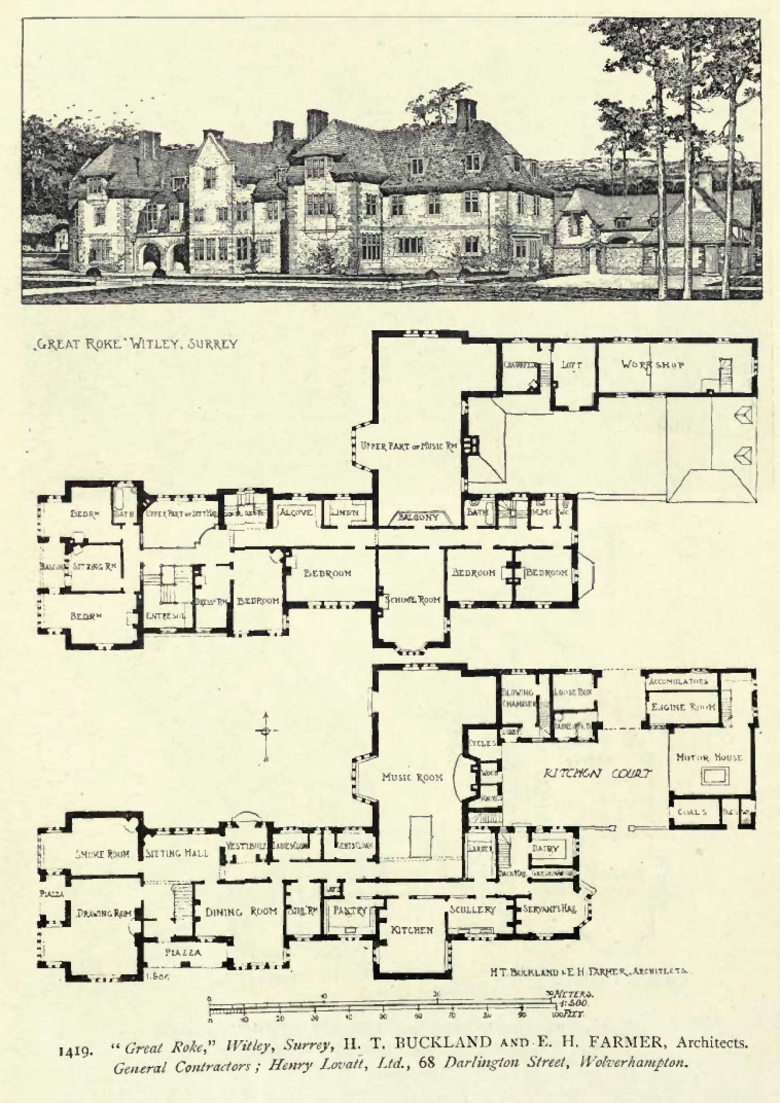
Academy Architecture and Architectural Review Vol. 38 (London, 1910)
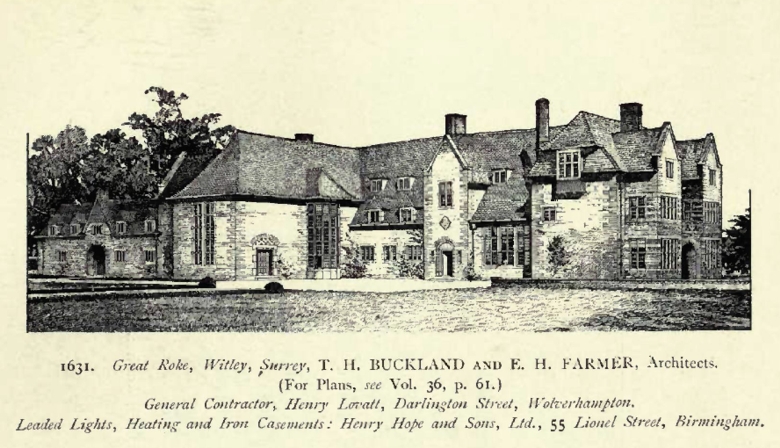
Recent English Domestic Architecture, a special issue of the Architectural Review (London, 1910)
Newly constructed house, before Gertrude Jekyll's landscaping. The photos of the family rooms are particularly
interesting, rooms that we remember today as classrooms. There was originally no window above the external door to the music
room, that was put in by the Josephites to provide more illumination to the chapel.
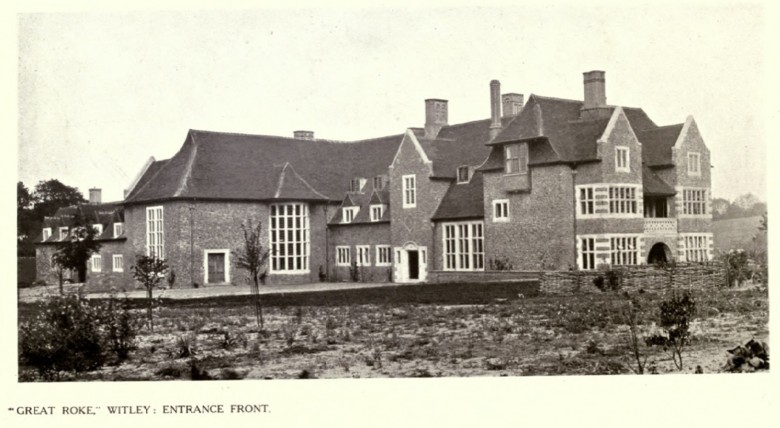
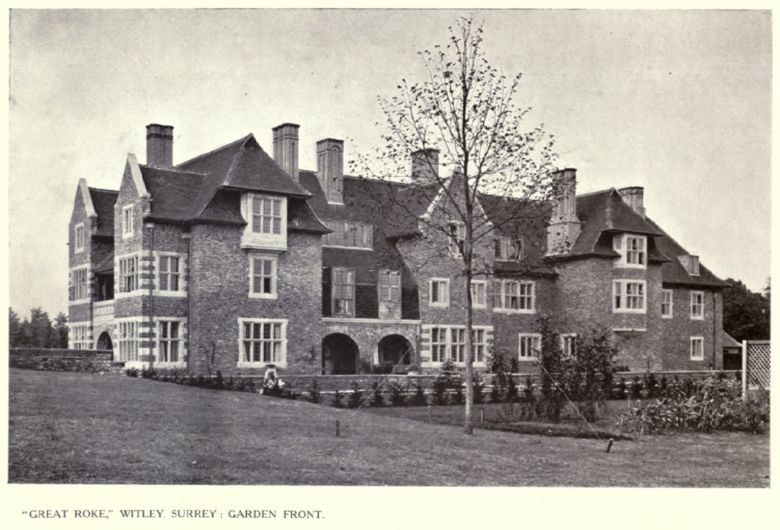
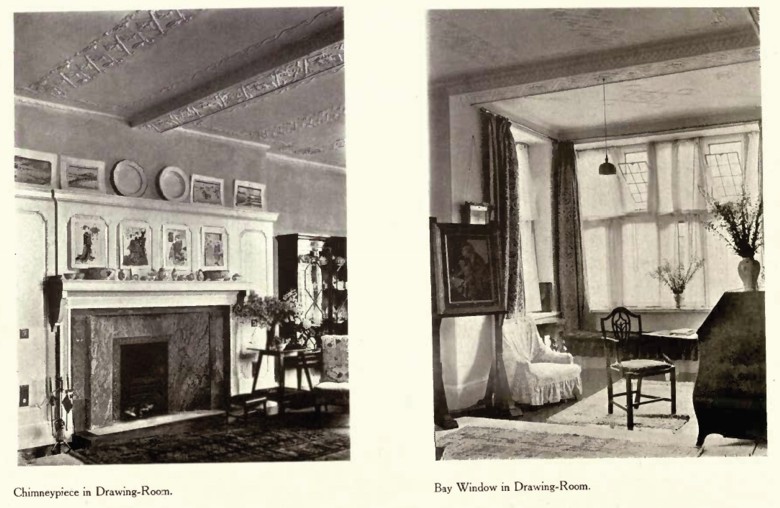
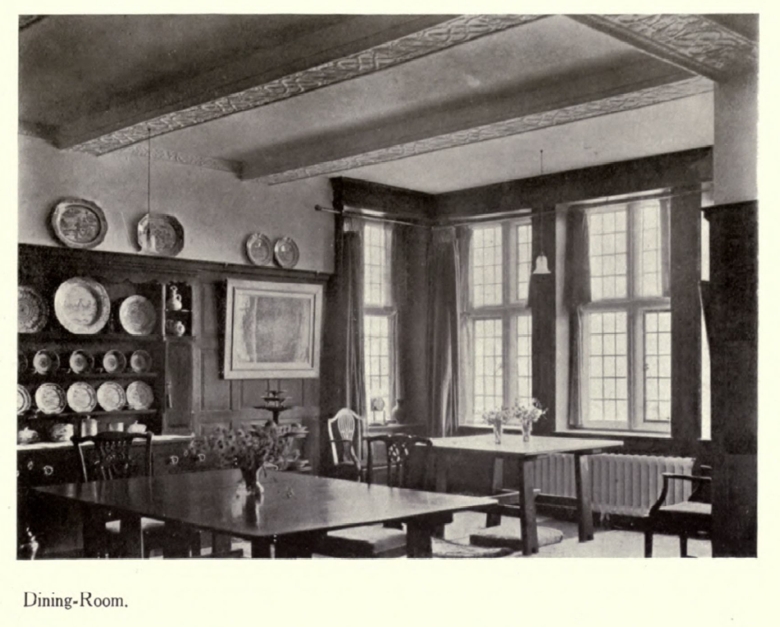
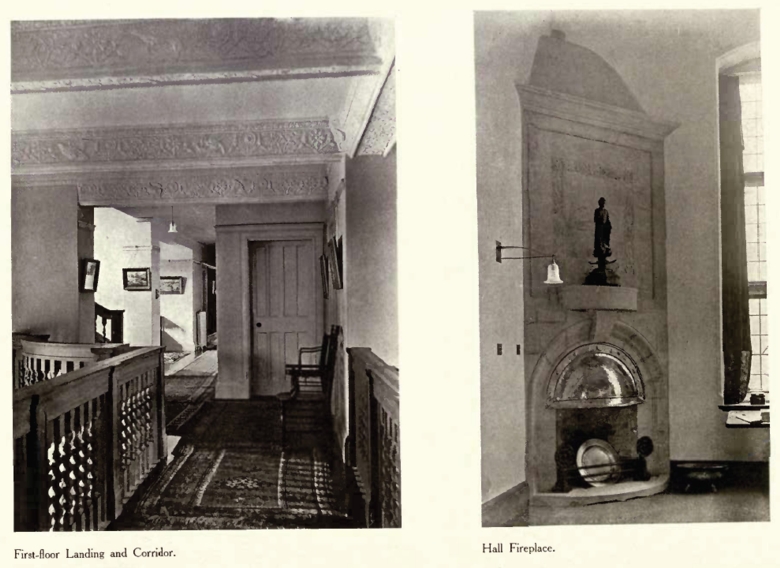
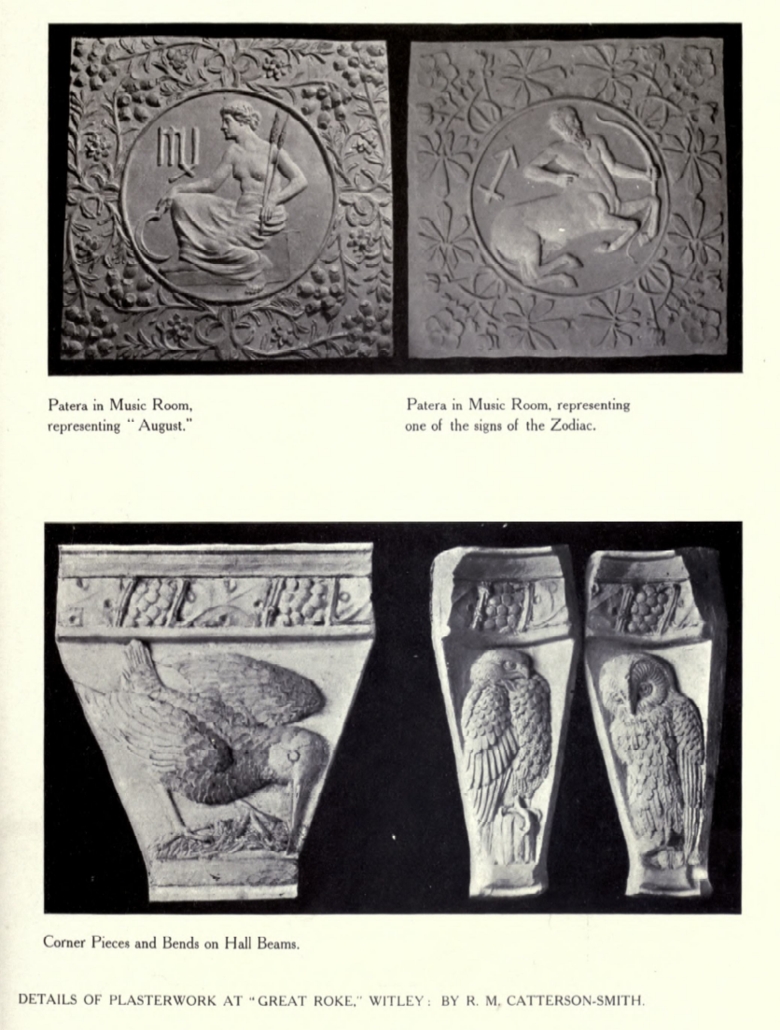
Recent English Domestic Architecture, a special issue of the Architectural Review (London, 1912)
Landscaping is now well in hand, with the long fishponds along the south front that are still there today,
although bisected by the 1950s classroom block.
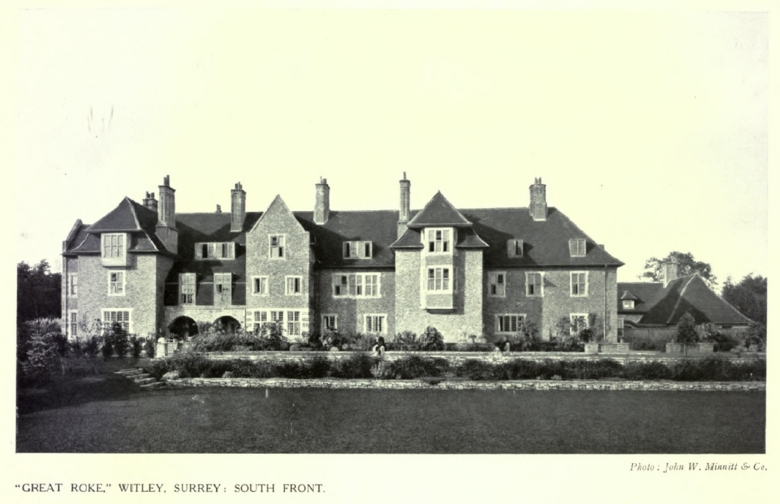
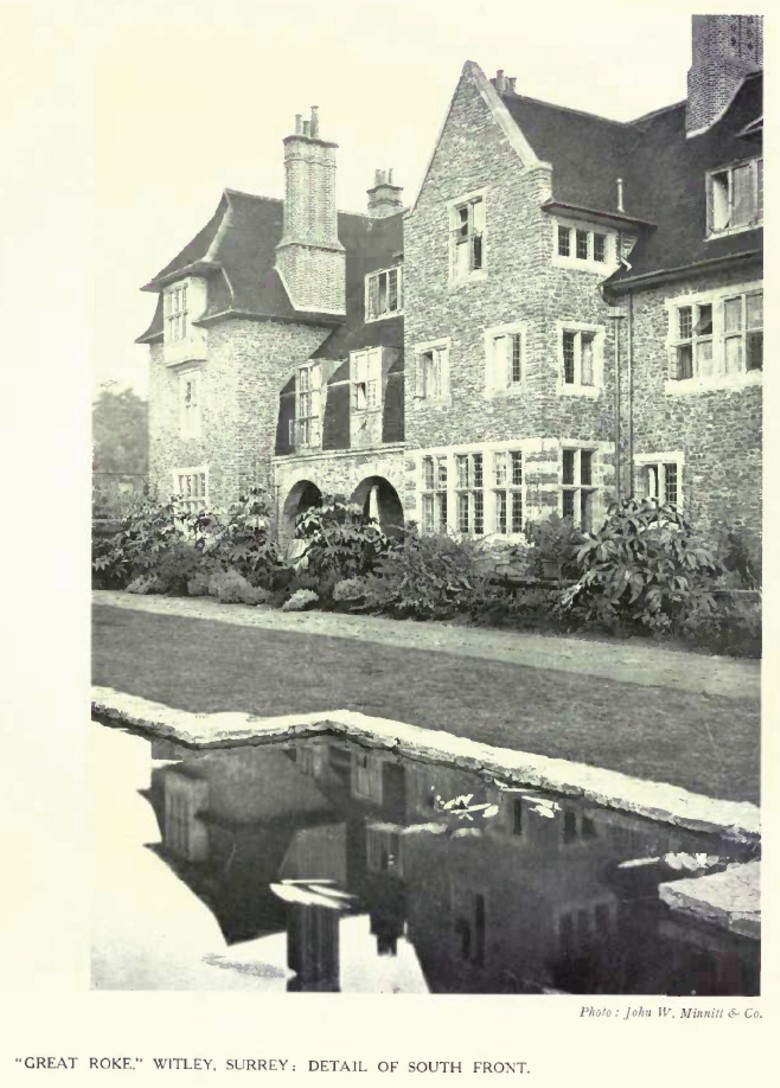
Notes on contractors mentioned above
Henry Lovatt
Henry Lovatt (1831-1913) developed a small builders business in fifty years into a company of civil engineers of
national importance. He was born in Wolverhampton in 1831, was educated at the Grammar School and Doctor Newman's school at
the Deanery. In 1858 he bought the builders and contractors business of John Ellis in Darlington Street, Wolverhampton. Between
1864 and 1878 his company was engaged in works for the Government, railways, reservoirs, churches and banks.
Contracts included the widening of the Great Western lines out of Paddington and work for the Great Northern,
Great Eastern, Midland, London and South Western, Great Central, and London Brighton and South Coast railways. He made improvements
to the Limehouse Dock and later built the large new dock of the Manchester Ship Canal.
In the west end of London he built the Carlton Hotel, His Majesty's Theatre in the Haymarket, the Central
Technical Institute at South Kensington, the new Gaiety Theatre in the Strand, the King's Theatre Hammersmith, and also the New
Theatre Royal at Birmingham.
Industrial premises included, the Electric Construction Company at Gorsebrook and Siemens Brothers at Stafford,
followed by the Electric Generator Station at Greenwich and the new barracks on Salisbury Plain. In Paris they built the new
American Church and, at Portsmouth, a jetty and the new Naval
Barracks. At the time of his death in May 1913 the company was engaged in erecting a new barracks in Cairo.
Wilson Lovatt and Sons Ltd., Wolverhampton was incorporated in January 1914 as a private company to acquire the
undertakings and assets of Henry Lovatt Ltd. When it floated in 1952 it was still being run by three members of the Lovatt family.
Wilson Lovatt went into receivership in 1971.
Henry Hope & Sons
The company started in 1818 in Birmingham and commenced producing metal casement windows in 1819. In
between 1845 and 1857 they made all of the windows for the Houses of Parliament, and by 1900 their main product was metal windows.
In 1904 the company purchased some land at the corner of Dartmouth Road and Halford's Lane, Smethwick and
in 1905 built the Halford Works. In 1919 the whole business was transferred there, and by the late 1950s the factory covered around
10 acres.
The company acquired a 37 acre, old coal mining site in Wednesbury in 1938 and built a new works there which
included a hot dip galvanising plant. The plant included a 120 ton bath of zinc at a temperature of 852 degrees Fahrenheit.
Subsidiary companies included Hope's Heating and Engineering Ltd. and branches of the casement business
in the USA and Canada.
By 1957 Hopes made over 500 types and sizes of windows and installed a specially designed, highly mechanised
galvanising plant at Wednesbury for the production of reversible steel windows for multi-storey flats.
The Times of 30 September 1963 noted that the late Ralph Water Hope of Edgbaston, former Chairman, left £703,000
net (worth around £11 million today).
The company had a large export market and in 1965 merged with another metal window manufacturer, the Crittall
Manufacturing Company Limited of Braintree to form Crittall-Hope Limited.
Crittall-Hope was taken over by Slater-Walker in 1969, who closed the midlands plants, moving production to
Crittall plants in Essex. Braintree then became
the new company's headquarters. It was again taken over by Norcros in 1974 and has had four further owners since.
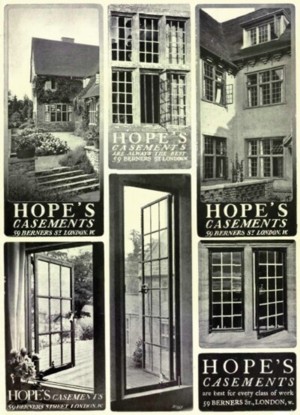
Advertisement from 1909 journal